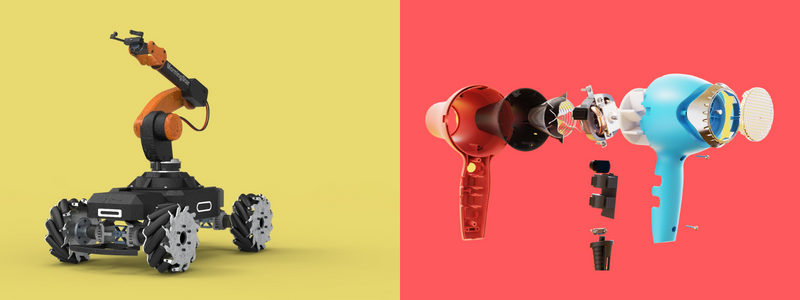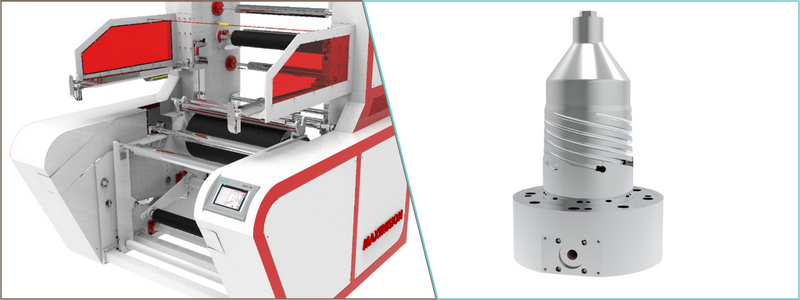Product development is done on two routes: work with a product design company to create an entirely new invention to occupy a unique niche or modify an existing commodity in the market. Regardless of the route taken, product development is essential for any business to stay competitive. If a company hopes to remain in the market for any time, it has to keep making new products over the years.
One thing to understand is that product development costs a lot of money. Even a simple product could cost a company thousands of dollars to create. For example, a couch coaster (a drink holder for a sofa) doesn’t look sophisticated, but the development process is relatively budget-demanding. The money covers the fees for outsourced initial concept design, multiple prototyping iterations, and packaging. Electronic products, like radio clocks or IPV6-rated flashlights, will probably require two or three times as much money.
There is no one gold standard for effective product development. Every CAD services company implements a specific methodology that suits the nature of the business and its goals. The existing product line also affects the direction of the development.
Product design process and costing
The complete step of the design process depends on the type of product in question. A simple non-mechanical, non-electronic product, with neither a moving part nor circuitry board inside, will take fewer steps than its more complex counterpart. For example, creating an action figure based on an existing popular character is almost always quicker than designing an RC car; a hand tool should be easier to make than a power tool.
Electronic products require some of the lengthiest multistep design processes. Apart from creating the external enclosure, the designer has to fit an already-programmed PCB inside. The two major components must be manufactured separately before entering an assembly line. If the product is more straightforward, you can omit the irrelevant steps from the list below.
RELATED: The Top 30 Industrial Design Firms & Company List
🚀 Ideation – Estimated budget: $0 to $10,000
The first step in the lengthy design process is ideation, regardless of the product. Ideation covers the product concept and how you plan to introduce it to the public. Product development is an intensive undertaking that requires proper management and planning. It is the step where you create initial design drafts, prepare an action plan, and determine the minimum or maximum budget.
If you only focus on the design and ignore everything else, the project can cost many times more budget than expected, or worse, be a total waste of time, money, and energy. An experienced designer can probably handle the ideation alone, free of charge. An average person with an idea for a product may need advice from a design consultant, financial consultant, and patent lawyer. Every single one of them costs money to hire.

🚀 Hardware design – Estimated budget: $5,000 to $15,000
PCB layout design freelancers help you think of the design and transform the concept into a technically viable product. CGI, specifically CAD drawings, is the most effective method to visualize the look and feel of your product. In fact, most of your design work will be done on a computer screen using CAD software. A 3D visualization lets you learn about the product in the tiniest detail, including part components, materials, dimensions, strength, and overall structure.
For a mechanical product with moving parts, a 3D animation is best to visualize the internal mechanism and how they work. A 3D animation is more expensive than a static render. It is costly because you need a complete range of visualization and renderings, viewed from every angle, to understand the design.
🚀 Mechanical engineering – Estimated cost: $4,000 to $40,000
If the product has no mechanical component, you can omit the step. A CGI is a virtual design representing the best possible outcome of the design process. Just because everything works on a screen, it does not always mean the product will be as practical in real life. There is always a possibility the components must be custom-manufactured or that the materials you choose are not ideal due to their physical characteristics or prices.
Working with a freelance mechanical engineer ensures the product is optimized for its intended functionality and purposes. There will be design constraints such as budget limitation, manufacturing equipment, or product dimension. One of the primary jobs of a mechanical engineer is to find the solutions (or at least a workaround) to the problems and come up with the desired design. Think of the step as the Design for Manufacturing (DFM) process. The result is a specification-accurate design with various modifications to ensure manufacturability and reduce production costs.
🚀 Electronics engineering – Estimated cost: $4,000 to $40,000
The step is unnecessary if you don’t plan to put electronics in the product. Working with an electronics design services company revolves around PCB (printed circuit board) design. Although it is likely a separate process from hardware design and mechanical engineering, the electronics must fit perfectly into the case. There can be dozens or more components on the circuit board, working together to deliver various functionalities, for example, sounds, lights, movements, and power regulatory mechanisms. Some PCBs require complex programming to enable wireless connectivity, sensors for automated features, and firmware updates.
RELATED: Top 100 Electronics Design Companies to Create Prototypes for Hardware Startups
🚀 Prototyping – Estimated cost: $200 – $10,000
No matter the product, prototyping is indispensable. A prototype allows you to inspect the visuals, try the features, and put the design to the test. With electronic products, you may have to prototype in several stages, from alpha, beta, and the final iteration for mass production. Each iteration is an opportunity to find room for improvement and perhaps remove redundancy.
One of the most significant cost factors is the prototyping method itself. An injection molding method is expensive because you need to have the mold built beforehand. 5-axis machining is best when the product is made of metals, whereas additive manufacturing (i.e., 3D printing) is relatively affordable and quick for thermoplastic materials.

🚀 Certifications – Estimated cost: $5,000 to $50,000
Every product has to meet safety and regulatory standards in the country where you plan to sell it. Electronics require a complex range of certifications, including but not limited to FCC, UL, RoHS, and UL, depending on the countries. It may take three months to complete the procedures. Non-electronic products probably have to meet some safety standards, but the process will not be as lengthy or expensive.
Additional steps
At this point, the product concept is primarily complete. Further developments will include:
🚀 Packaging – Estimated cost: $2,500 to $5,000
A graphic designer can help with packaging design services in accordance with product type, brand, and target consumers. Retail packaging affects sales and is part of a marketing strategy. The packaging should protect the product and tell potential buyers about the brand.
🚀 Manufacturing setup – Estimated cost: $10,000 to $100,000
The manufacturing setup cost can be affordable if the mold is readily available. For example, shoe design does not likely require new tooling or custom manufacturing equipment. Unless the shoe is unique in many parts to the point where you cannot make it using existing machines, chances are the manufacturing setup will cost no more than $10,000.
🚀 First batch manufacturing – Estimated cost: $25,000 or more
Most factories have their minimum order quantity (MOQ). You cannot place an order for mass production on a small number of parts. An MOQ of 2,000 units is not uncommon.
Product distribution costs
Your products are finally ready to hit store shelves. However, they are still stored in the factory warehouse. The next step covers distribution and introduction to the market. If the factory partner is in another country, you must consider the shipping cost to bring the products home. In most cases, you must hire a third-party service. Heavy or delicate products (fragile) need specialized shipping, and secure handling and guarantee of safety throughout the distribution require additional costs.
Another thing to remember is that developing a product for a specific region may also come with particular regulations. For example, some countries implement strict laws pertaining to the imports or sales of tobacco-related products and precious metals. Developing a product in your home country and for the domestic market will remove some financial burdens from import and duty. However, the product must still meet regulatory standards, and its design should comply with local laws.
The effectiveness of your drafting services team determines the overall cost; multiple prototyping stages and endless refinements due to design flaws can exponentially increase the expense. Ideally, every company should think through every design idea, analyze the technical feasibility, and determine the most financially viable option to develop. An established company typically has an in-house team of engineers and designers – working in an advanced laboratory – to conduct constant experiments. On the other hand, a small or midsize business will have to rely on external partners to work on product ideas.

Get a quote on your product design project
Need help with your next product design project? Our team has helped thousands of clients, including NASA, with engineering and product development. Get started by submitting a quote for a free estimate.
